Step 2: Create a Journey
Create your first ever workflow automation swiftly through integrating apps at a quick glance. Understand its effortless execution and experience the breeze of automation resulting in time-saving.
Journeys are automated workflows with help you perform event based tasks without any manual intervention.
Creating a journey using Gupshup Integration Platform is as easy as a pie. In just a few mouse clicks and with the help of a valid set of credentials of the applications you want to integrate, your journey gets ready to automate your tasks in a blink of an eye. Follow the below steps to get started with creating your first journey.
Before you start
Make sure that you have completed Step 0 and Step 1 from this documentation. Please move forward if you have already done that.
Selecting a folder
- Select a folder in which you want to create a journey, say Task, as shown in the following image. To know how to create a new folder, click here
- To start with a new journey, either click the + Create Journey button or click the Get started by creating a new journey link. You will be redirected to the journey window where you can see various fields such as Journey Name, Event, Steps, and options to save and start your journey:
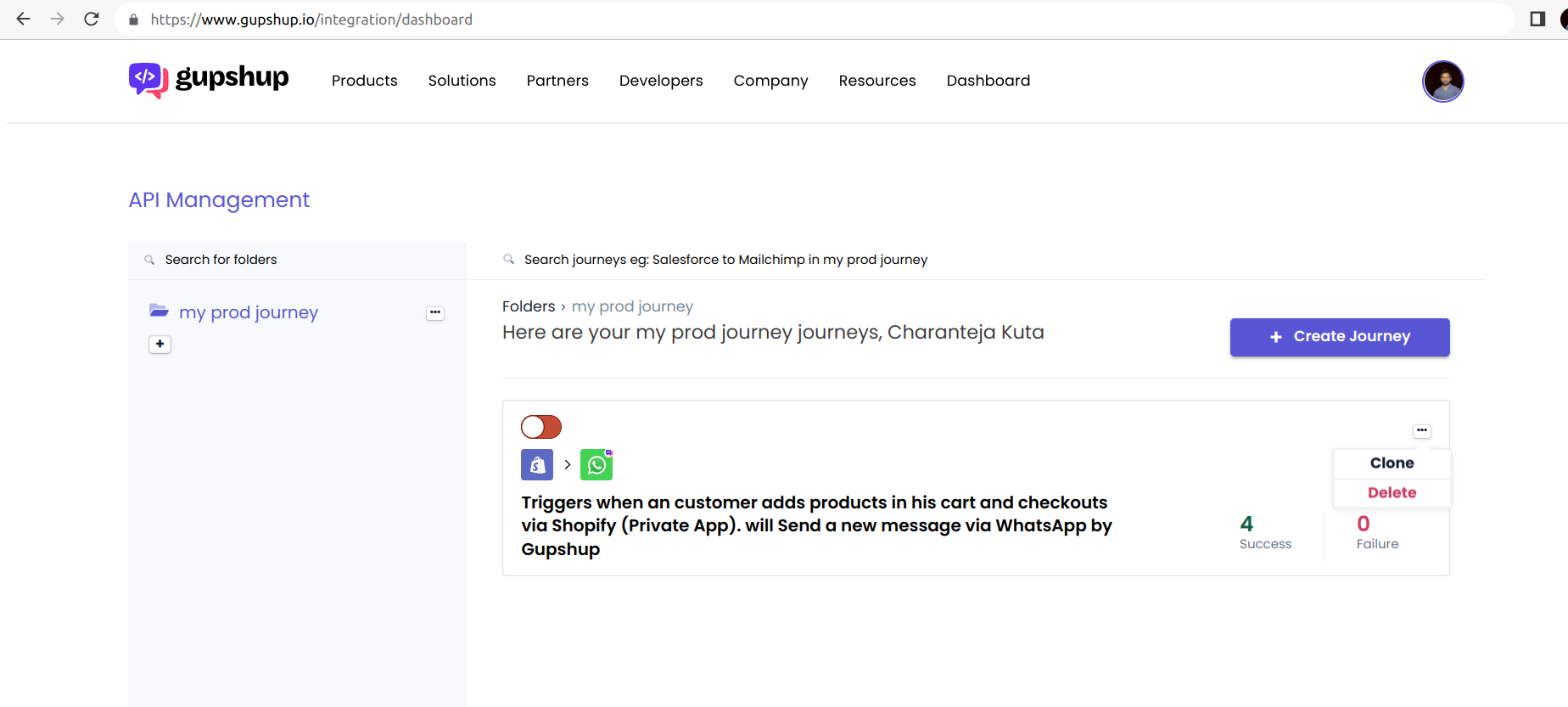
- A journey is essentially made up of two elements: A trigger and one or more actions. A trigger starts the journey execution and steps are the tasks that the journey performs automatically.
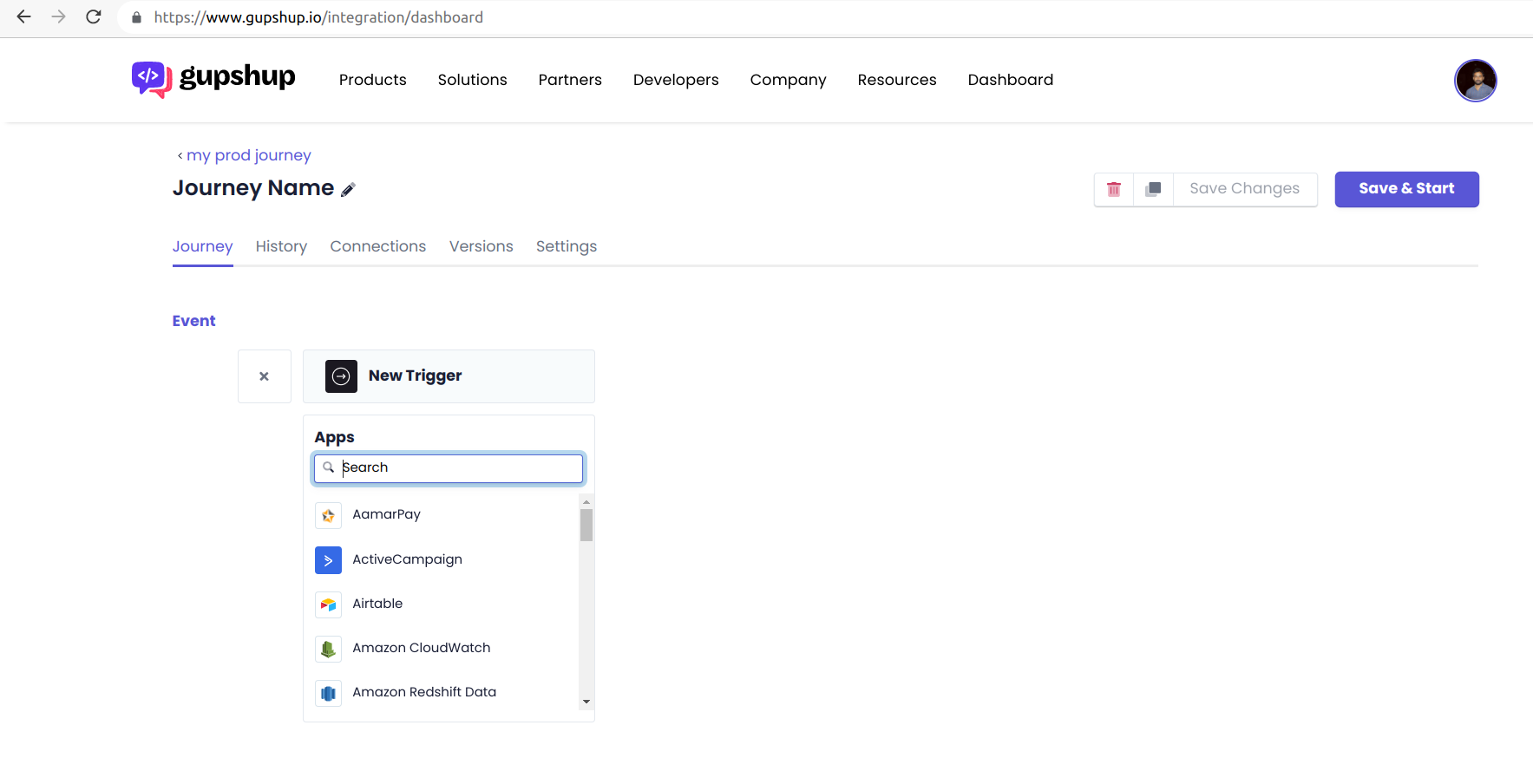
Creating a new journey
Let’s begin by creating the following simple use case as our first journey.
Use case
Get the employee goals survey details and store them in a specific spreadsheet so that the company can roll out the appraisals for the year 2022.
- Trigger: Typeform - New Form Response
- Action: Google Sheets - Add row (new version)
Prerequisite
Create a Typeform named Employee Goals and publish it. It must have a few questions that the employees can answer. The following image is the structure of Typeform we will be using to record the employee goals:

Now, create a spreadsheet named Employee goals survey in Google Sheets. Give headings to the sheet columns as per the questions mentioned in the survey form. This helps to classify and sync the answers in a proper manner:

Naming your Journey
Click on the edit button and rename the journey of your choice. The journey gets displayed with the specified name under the Folders tab. If you do not give a new to the journey, Gupshup uses a templatized description to name a journey upon saving its changes. It uses the app names configured in a trigger and actions as the title of the journey. E.g., Triggers a newly scheduled event via Scheduler by Gupshup will Send a new message via WhatsApp by Gupshup.

Configuring the Trigger
Before configuring the trigger, let’s give a name to our journey. To do so, click on the edit button given besides the name of your journey title in the header of the journey configuration manager. Enter the name of your choice, e.g., Typeform - Google Sheets.
To configure the trigger event, follow these steps:
-
Select the required app from the Apps drop-down menu displayed right below the New Trigger block. According to the use case, select Typeform. You can use the search option to search for the desired app.
-
On selecting the required app, a new drop-down menu will be displayed right next containing a list of the available trigger events for that particular app. In our case, select the New Form Response trigger:
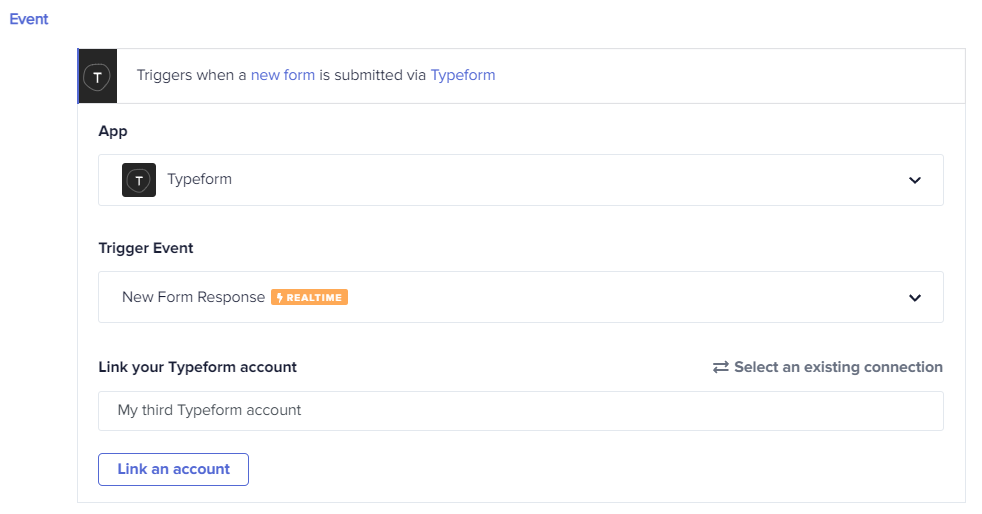
Selecting the Typeform trigger
Now, the app that you have selected (Typeform) requires a connection with Gupshup Integrations.
Click the Link an account button. The Typeform authorization window will open. It contains a list of permissions and scopes that Gupshup performs on your behalf. Click the Accept button. Your Typeform account is now connected with Gupshup.
In this way, we have successfully connected Typeform with Gupshup our trigger. The input fields open up after a successful connection. In the Form input field, select the Employee Goals form:
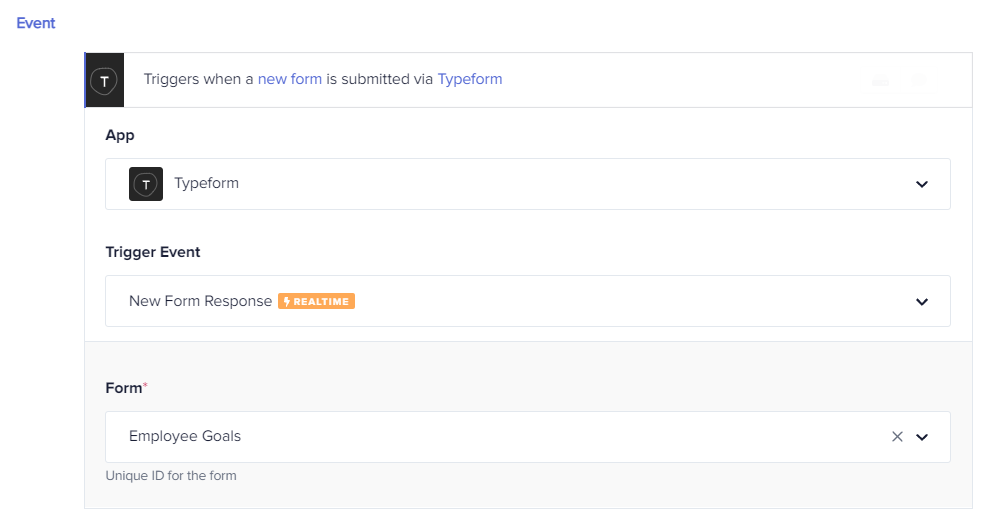
Configuring the Action
You can add one or more actions depending on the requirement of your journey. As of now, we will be configuring one action to understand the entire process. Scroll down to the Steps section. You'll get the following two options:
- Simple Action
- *Business Logic

Click on the Simple Action option. A new drop-down will appear containing a list of apps. Select Google Sheets. Once you select the required app, a new drop-down will appear right next to it containing the Actions available for the Google Sheets app:
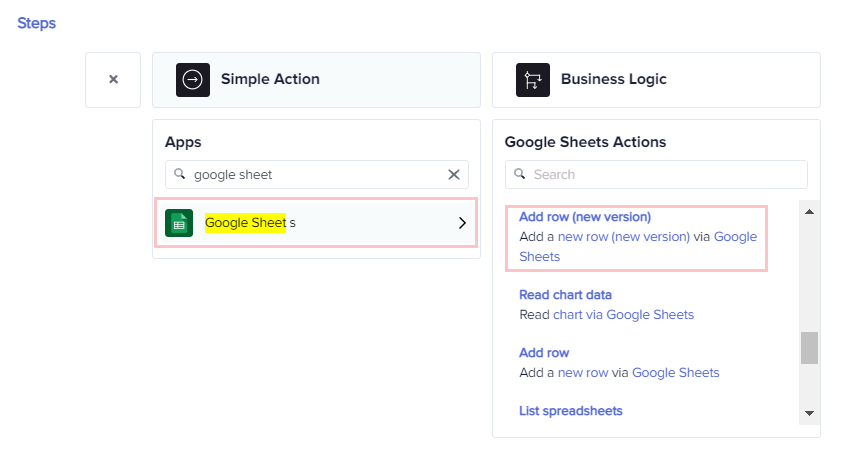
According to our use case, we will select the Add row (new version) action:
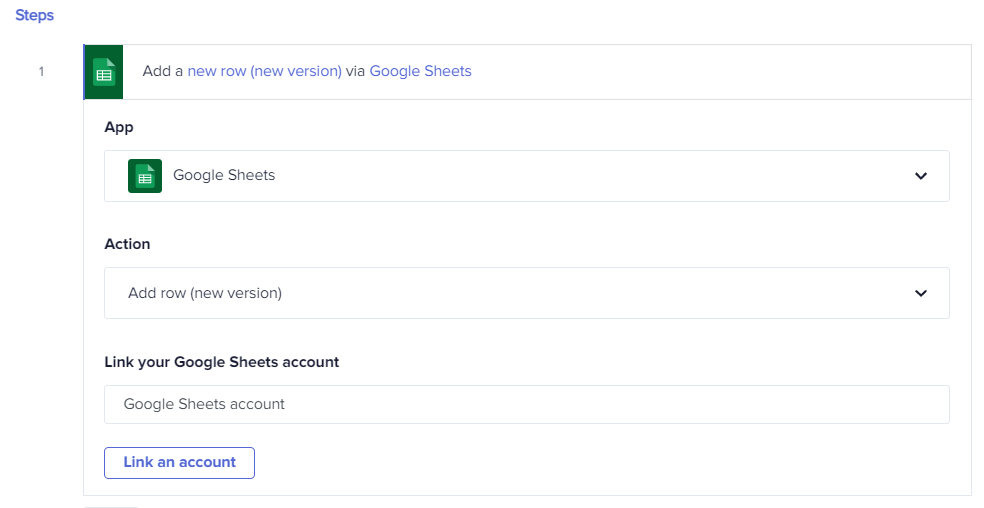
Now, click on the Link an account button to establish a connection between Gupshup Integration platform and Google Sheets. This will redirect you to the permission window as shown here:
If you have not logged in to your Google account, you will be asked to do so, first, by entering your valid credentials.
Click the Allow button to authorize Gupshup to perform the tasks on your behalf. Once your connection is successfully established, you’ll see the further action fields of Google Sheets as shown here:
-
Spreadsheet: Selec Employee goals survey from the drop-down menu.
-
Sheet name: Select the sheet. E.g., Sheet1. Next, the headings of the sheet will open as input fields. Drag and drop appropriate responses data pills in these input fields respectively from the Typeform | New Form Response Trigger under Data Tree Output:
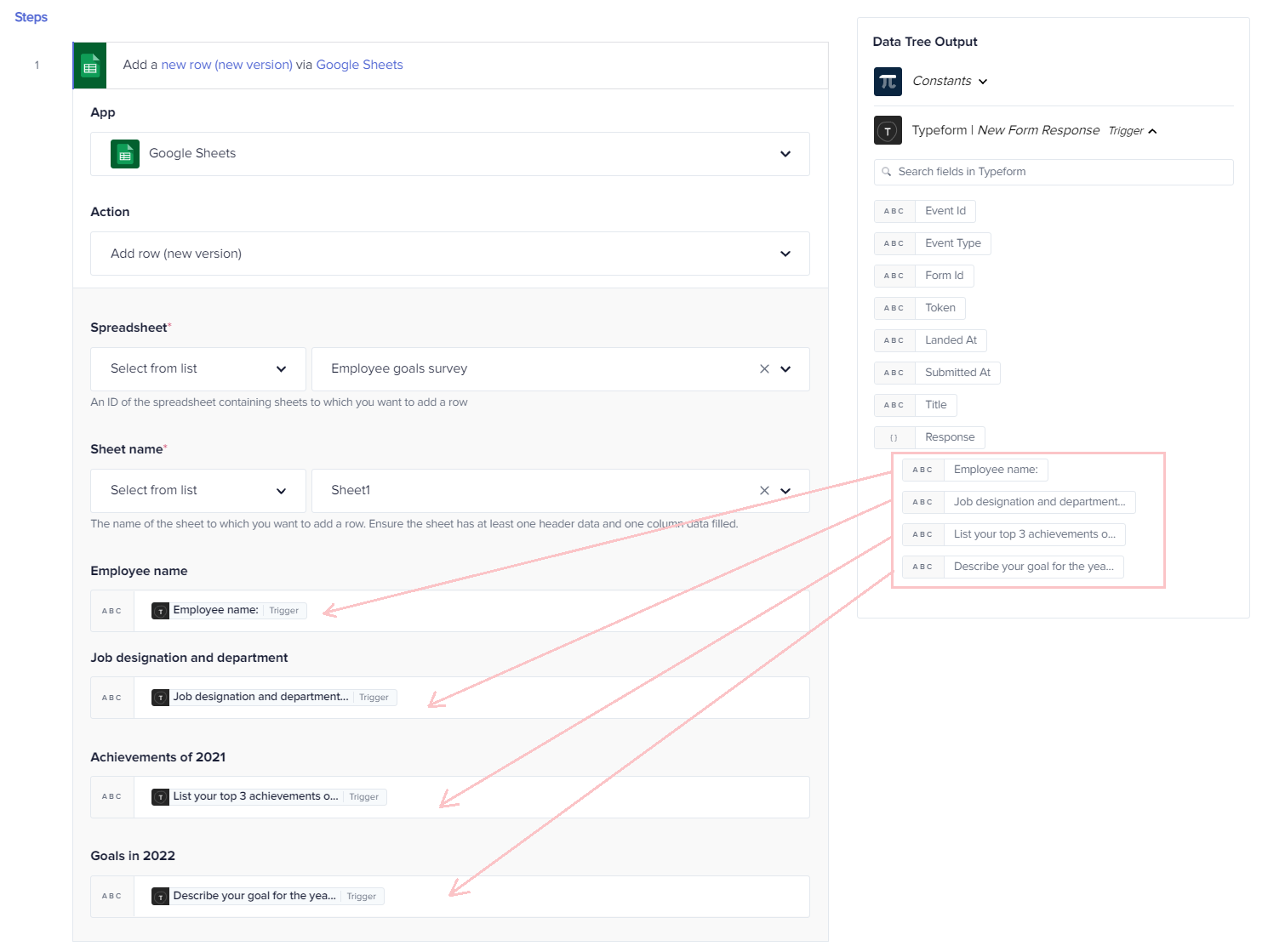
Save your journey
After you have finished entering all the required details and have successfully configured all your triggers and actions, click on the Save Changesbutton to save your journey. Then click on the Save & Start button. This will first test the journey for errors if any and then will execute the journey. In case of errors due to missing or invalid inputs in your app fields, you will get its list on your journey configuration manager. You will have to first solve all the errors and then you will be able to start your journey.
Testing and executing your journey
To test the journey we have created, let us create the trigger event we have defined. In other words, answer the question of the Employee Goals form and submit it.
As soon as you do this, your journey will execute in the background and will store the employee details in the respective columns of the Employee goals survey sheet:
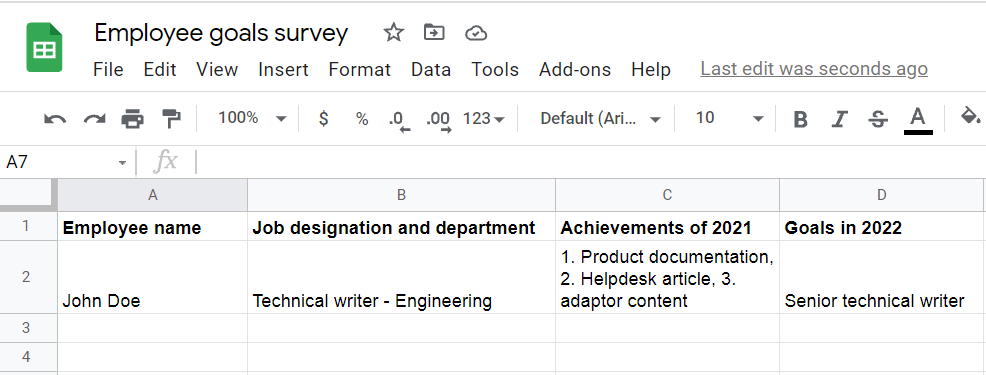
In this way, we have learned about triggers and actions, selecting or entering the details in their respective fields, configuring, and executing the journey. You can try using triggers of different apps from our list of services along with the combination of one or more actions to create complex yet easy and productive journeys. In the next document, we will look into the connections and the versions of the journey (using different use cases). Stay tuned!
Updated 2 months ago
